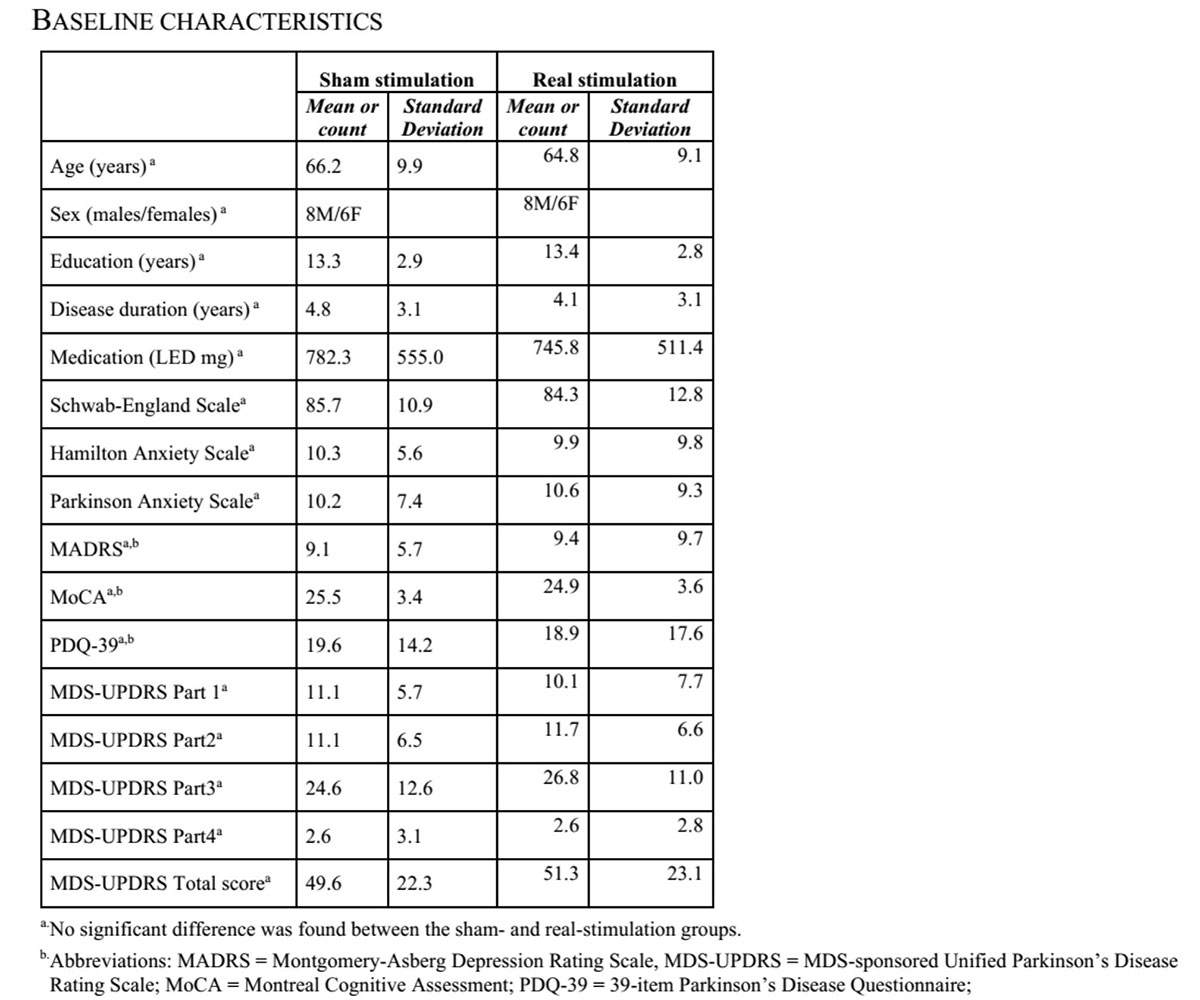Session Information
Date: Tuesday, September 24, 2019
Session Title: Parkinsonisms and Parkinson-Plus
Session Time: 1:45pm-3:15pm
Location: Agora 3 West, Level 3
Objective: High frequrncy (HF) repetitive transcranial magnetic stimulation (rTMS) improve anxiety in Parkinson’s Disease (PD).
Background: The high frequency repetitive transcranial magnetic stimulation above the left dorsolateral prefrontal cortex (DLPFC) improve depression in Parkinson’s Disease. For anxiety we have no many datas about the eficiency.
Method: 30 people with PD randomly devided into two groups, an active (n=15), and a shame (n=15) group. We used HF rTMS treatment for 10 days above the left DLPFC. An examiner (who do not know the type of the treatment) made 3 video records: before the stimulation (baseline, 1st day), after the 10 days session end (short term effect, 11th day), and after 30 days (long term effect, 41st day). To measure the severity of the anxiety we used Hamilton Anxiety Scale (HAM-A).
Results: 2 patients did not finish the protocol (one of the active, one of the shame treated group), their datas were excluded from the evaluation. At the actively-treated group the points improves 14.9 +/-4.8 to 8.3+/-5.2 (p=0.039), while the shame treated group there was no change (14.5 +/-4.8 to 14.1+/-5.2; p=0.879).
Conclusion: Our results shows that the HF rTMS at left DLPFC improve anxiety in PD.
To cite this abstract in AMA style:
A. Makkos-Weisz, N. Kovács, P. Endre, M. Kovács, D. Pintér. Repetitive transcranial magnetic stimulation can improve anxiety in Parkinson’s disease: a randomized, double-blind and controlled trial [abstract]. Mov Disord. 2019; 34 (suppl 2). https://www.mdsabstracts.org/abstract/repetitive-transcranial-magnetic-stimulation-can-improve-anxiety-in-parkinsons-disease-a-randomized-double-blind-and-controlled-trial/. Accessed January 5, 2026.« Back to 2019 International Congress
MDS Abstracts - https://www.mdsabstracts.org/abstract/repetitive-transcranial-magnetic-stimulation-can-improve-anxiety-in-parkinsons-disease-a-randomized-double-blind-and-controlled-trial/

